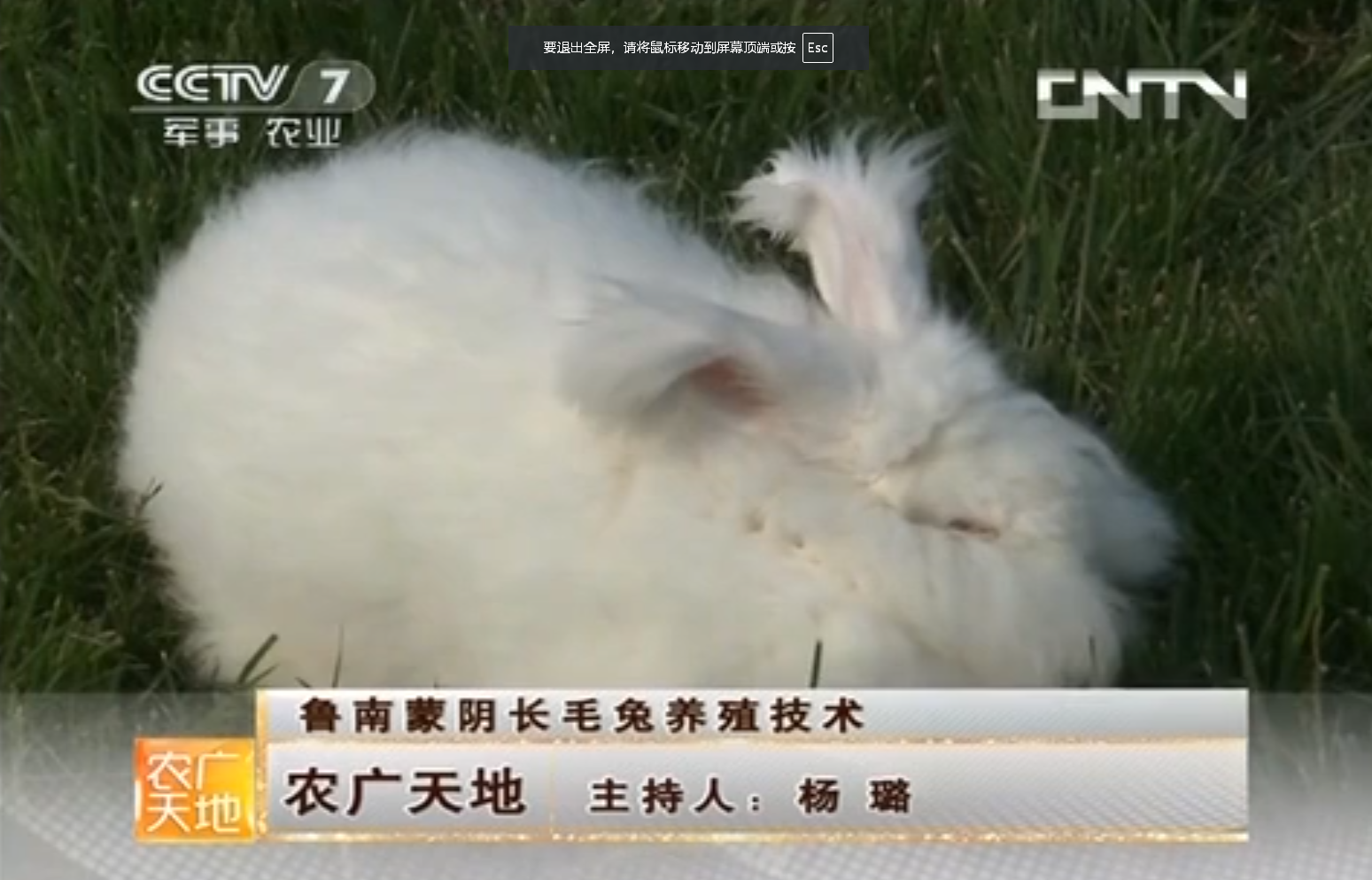

长毛兔怎么养?
 发布日期:2025-03-24
来源:http://www.myxinhua.com 发布人:创始人
发布日期:2025-03-24
来源:http://www.myxinhua.com 发布人:创始人
 长毛兔,因其能产出兔毛而备受养殖户青睐。要成功养殖长毛兔,需掌握科学的养殖方法,从多个关键环节入手。
长毛兔,因其能产出兔毛而备受养殖户青睐。要成功养殖长毛兔,需掌握科学的养殖方法,从多个关键环节入手。
Long haired rabbits are highly favored by breeders for their ability to produce high-quality rabbit hair. To successfully breed long haired rabbits, it is necessary to master scientific breeding methods and start from multiple key links.
养殖场地搭建
Construction of breeding grounds
合适的养殖场地是养好长毛兔的基础。兔舍应建在地势高燥、通风良好、阳光充足且排水便利的地方,远离污染源与嘈杂区域,避免影响兔子生长。兔舍内部需合理规划,根据养殖规模设置足够数量的兔笼。兔笼材质以金属或竹制为宜,要保证足够的空间,让兔子能自由活动,一般每个兔笼面积在 0.5 - 0.8 左右。笼底要设计成漏粪结构,方便清理粪便,保持兔舍清洁卫生。同时,在兔舍内安装自动饮水系统,确保兔子随时能喝到干净的水。
A suitable breeding site is the foundation for raising long haired rabbits. Rabbit houses should be built in areas with high and dry terrain, good ventilation, sufficient sunlight, and convenient drainage, away from pollution sources and noisy areas, to avoid affecting the growth of rabbits. The interior of the rabbit house needs to be planned reasonably, and a sufficient number of rabbit cages should be set up according to the scale of breeding. The material of the rabbit cage is preferably metal or bamboo, ensuring sufficient space for the rabbits to move freely. Generally, the area of each rabbit cage is around 0.5-0.8 square meters. The bottom of the cage should be designed as a leakage structure to facilitate the cleaning of feces and maintain the cleanliness and hygiene of the rabbit house. At the same time, install an automatic drinking water system in the rabbit house to ensure that the rabbits can drink clean water at any time.
饲料科学投喂
Scientific feeding of feed
长毛兔的饲料搭配直接关系到其生长与兔毛质量。日常饲料以干草为主,如苜蓿草、提摩西草等,可占饲料总量的 60% - 70%,为兔子提供必要的膳食纤维,促进肠道蠕动。搭配 20% - 30% 的精饲料,如玉米、豆粕、麸皮等混合制成的颗粒饲料,满足兔子对蛋白质、能量等营养物质的需求。另外,适量添加青绿饲料,如胡萝卜、青菜叶等,补充维生素和水分,但要注意新鲜度,避免投喂变质食物。不同生长阶段的长毛兔,饲料配方需相应调整。幼兔阶段,精饲料比例可适当提高,以促进生长发育;成年兔在产毛期,可增加蛋白质含量高的饲料,提升兔毛产量与质量。
The feed combination of long haired rabbits is directly related to their growth and the quality of their fur. Daily feed mainly consists of high-quality hay, such as alfalfa and Timothy grass, which can account for 60% -70% of the total feed, providing rabbits with necessary dietary fiber and promoting intestinal peristalsis. Paired with 20% -30% concentrated feed, such as granular feed made from corn, soybean meal, bran, etc., to meet the nutritional needs of rabbits for protein, energy, and other nutrients. In addition, add appropriate amounts of green feed, such as carrots, green vegetable leaves, etc., to supplement vitamins and water, but pay attention to freshness and avoid feeding spoiled food. The feed formula for long haired rabbits at different growth stages needs to be adjusted accordingly. During the juvenile rabbit stage, the proportion of concentrated feed can be appropriately increased to promote growth and development; During the wool production period, adult rabbits can increase their feed with high protein content to improve the yield and quality of rabbit hair.
日常精细管理
Daily refined management
日常管理工作繁杂却关重要。每天要定时清扫兔舍,粪便和剩余饲料,防止细菌滋生。定期检查兔笼,确保无破损,避免兔子逃脱或受伤。观察兔子的精神状态、采食情况和粪便形态,若发现异常,及时查找原因并处理。长毛兔的毛发护理不容忽视,每隔一段时间要梳理兔毛,防止打结,一般每周梳理 2 - 3 次。在高温季节,注意给兔舍降温,可通过通风、洒水等方式,避免兔子中暑;寒冷季节则要做好保暖措施,如在兔笼内铺垫干草。
Daily management work is complex but crucial. Regularly clean the rabbit house every day, remove feces and leftover feed to prevent bacterial growth. Regularly inspect the rabbit cage to ensure no damage and prevent rabbits from escaping or getting injured. Observe the mental state, feeding habits, and fecal morphology of rabbits. If any abnormalities are found, promptly identify the cause and handle it. The hair care of long haired rabbits cannot be ignored. It is necessary to comb the rabbit hair at regular intervals to prevent tangling, usually 2-3 times a week. During the hot season, pay attention to cooling down the rabbit house by ventilation, watering, and other methods to prevent rabbits from suffering from heatstroke; In cold seasons, it is necessary to take measures to keep warm, such as laying hay in the rabbit cage.
疾病有效防治
Effective prevention and treatment of diseases
疾病防治是长毛兔养殖成功的关键保障。坚持预防为主的原则,定期对兔舍、兔笼进行,可选用专用剂,每周 1 - 2 次。按时给兔子接种疫苗,预防兔瘟、巴氏杆菌病等常见疾病。日常饲养中,保持饲料和饮水的清洁卫生,减少病菌传播途径。若兔子不幸患病,要及时隔离。例如,兔子患腹泻时,可根据病情投喂适量的益生菌或药物,调整饲料结构,同时注意补充水分,防水。
Disease prevention and control are key guarantees for the successful breeding of long haired rabbits. Adhere to the principle of prevention first, regularly disinfect rabbit houses and cages, and use specialized disinfectants to disinfect 1-2 times a week. Vaccinate rabbits on time to prevent common diseases such as rabbit plague and Pasteurella infection. In daily feeding, maintain the cleanliness and hygiene of feed and drinking water to reduce the transmission routes of bacteria. If a rabbit unfortunately falls ill, it should be isolated and treated promptly. For example, when rabbits suffer from diarrhea, they can be fed an appropriate amount of probiotics or medication according to their condition, adjust the feed structure, and pay attention to replenishing water to prevent dehydration.
养殖长毛兔需要养殖户在场地搭建、饲料投喂、日常管理和疾病防治等方面用心经营,严格遵循科学方法,才能提高养殖效益,收获兔毛与健康兔子。
Breeding long haired rabbits requires farmers to carefully manage the site construction, feed feeding, daily management, and disease prevention and control, strictly follow scientific methods, in order to improve breeding efficiency and harvest high-quality rabbit hair and healthy rabbits.
本文由长毛兔友情奉献.更多有关的知识请点击:http://www.myxinhua.com我们将会对您提出的疑问进行详细的解答,欢迎您登录网站留言.
This article is a friendly contribution from Long haired Rabbit For more information, please click: We will provide detailed answers to your questions. You are welcome to log in to our website and leave a message